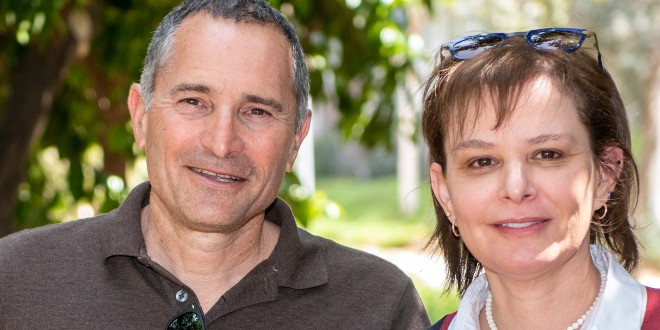Autoimmune diseases in which the person’s immune system – meant to protect against invaders – mistakenly recognize tissues in the body as “foreign” – are usually much more common in women than men.
Women are less susceptible to infectious diseases than men. Still, they are more prone to autoimmune diseases, partly because females have two X chromosomes, which have many genes relating to the immune system. Thus, the rate of autoimmune diseases such as scleroderma, multiple sclerosis, rheumatoid arthritis, and myasthenia gravis are about twice as common in women than in men.
The exact mechanism of such autoimmune conditions is not well understood. Still, the presumed mechanism tends to vary among the Many autoimmune disorders tend to affect women during periods of extensive stress, such as pregnancy, or during a tremendous hormonal change.
Scleroderma affects one in 10,000 people or about 250 persons per million adults. The disease often develops between the ages of 35 and 55. Systemic scleroderma can affect almost any organ in the body, and there is a large variability of symptoms among affected individuals. They are affected by scleroderma.
Localized scleroderma is the mildest form of the condition; this type affects only the skin, causing one or more hard patches to develop. Fortunately, internal organs aren’t affected.
In a new study published today in the journal Cell, researchers headed by Prof. Ido Amit at the Weizmann Institute of Science in Rehovot have shown that supporting cells called fibroblasts – long viewed as uniform background players – are, in fact, extremely varied and vital. According to the study, a subset of these cells could lie at the origins of scleroderma. The findings open a new direction for developing a future therapy against this devastating, incurable disorder.
Scleroderma comes from the Greek skleros, meaning “hard,” and derma, meaning “skin”). Symptoms include the formation of an abnormally hard, inflexible layer of skin on the arms, legs, and face. Its manifestations vary significantly among patients. In about a third of the cases, the disease advances rapidly and spreads beyond the extremities, causing life-threatening damage to internal organs. Immune-regulating drugs that normally bring relief to people with autoimmune diseases are less effective in scleroderma, which has a higher mortality rate than other rheumatic disorders.
“Scleroderma is one of the most frustrating disorders to treat – we can alleviate some of the patient’s symptoms, but usually we cannot significantly affect the cause of the disease, block its progression or reverse its course,” said Prof. Chamutal Gur, a senior physician in the rheumatology department at Hadassah University Medical Center in Jerusalem who led the new study in Amit’s lab in Weizmann’s immunology department. Her interest in this disease is not only professional: Two of her cousins have been diagnosed with scleroderma. When she joined Amit’s lab as a postdoctoral fellow some three years ago, her goal was to get to the root of this puzzling disease.
Gur and colleagues launched a study of scleroderma using technologies developed in Amit’s lab for simultaneously exploring the genetic material of thousands of individual cells. These technologies, known as single-cell RNA sequencing, reveal each cell’s unique identity.
The study was conducted in collaboration with Dr. Hagit Peleg, Dr. Suhail Aamar, Dr. Fadi Kharouf, Dr. Anat Elazary, and other rheumatologists at Hadassah, and with Prof. Alexandra Balbir-Gurman, who supervised the clinical aspect of the study and Dr. Yolanda Braun-Moscovici, both of the Rambam Medical Center in Haifa.
The shortcode is missing a valid Donation Form ID attribute.
The researchers collected skin samples from nearly 100 scleroderma patients and more than 50 healthy volunteers who served as a control group in the largest-ever study to investigate the disease. While perfecting the sample collection technique, Gur performed nearly 20 skin biopsies on herself.
The researchers looked for immune cell differences between the control and patient groups. But contrary to what would be expected of an autoimmune disease, the analysis failed to reveal a characteristic, global pattern of immune abnormalities in most patients. Instead, to their surprise, the researchers found that the patients’ fibroblasts differed significantly from those of the controls.
Aside from roles in growth and wound healing, fibroblasts were thought to be mere “scaffolding” holding cells in place. The new study challenges this. The researchers found that fibroblasts can be divided into about ten major groups, each performing different and often vital functions, from conveying immune system signals to affecting metabolism, blood clotting, and blood vessel formation. These groups can be further broken into some 200 subtypes.
Most importantly, the researchers managed to identify a subset of fibroblast whose concentration drops sharply in the early stages of scleroderma. They named these cells Scleroderma-Associated Fibroblasts, abbreviated as ScAFs (also short for “scaffold”). ScAFs accounted for nearly 30% of all fibroblasts in healthy controls; this percentage decreased dramatically in scleroderma patients and continued to plummet as the disease progressed.
The researchers mapped out the locations of ScAFs deep within skin tissue. They tapped these cells’ RNA to determine what changes a functional SCAF into a malfunctioning cell common in scleroderma patients. They also identified biological markers correlated with specific kinds of organ damage; these markers can help physicians administer a personalized treatment to prevent life-threatening complications. The research also revealed SCAF-related signaling pathways targeted in future scleroderma therapies.
“The reduction in the size of a critical subset of fibroblasts appears to be an early event in the course of scleroderma,” Amit explained. “It might be possible to design a therapy that will make up for this loss, slowing the progression of the disease.”
“Our approach is relevant to other diseases,” adds Dr. Shuang-Yin Wang of Amit’s lab, who led the study’s data analysis using artificial intelligence tools. “It reveals the enormous potential of meticulous tissue analysis involving advanced single-cell technologies for uncovering disease dynamics.”
“Integrating the latest single-cell genomic research techniques with clinical data can shed new light on diseases whose origins are currently obscure,” Amit concluded.
The shortcode is missing a valid Donation Form ID attribute.






